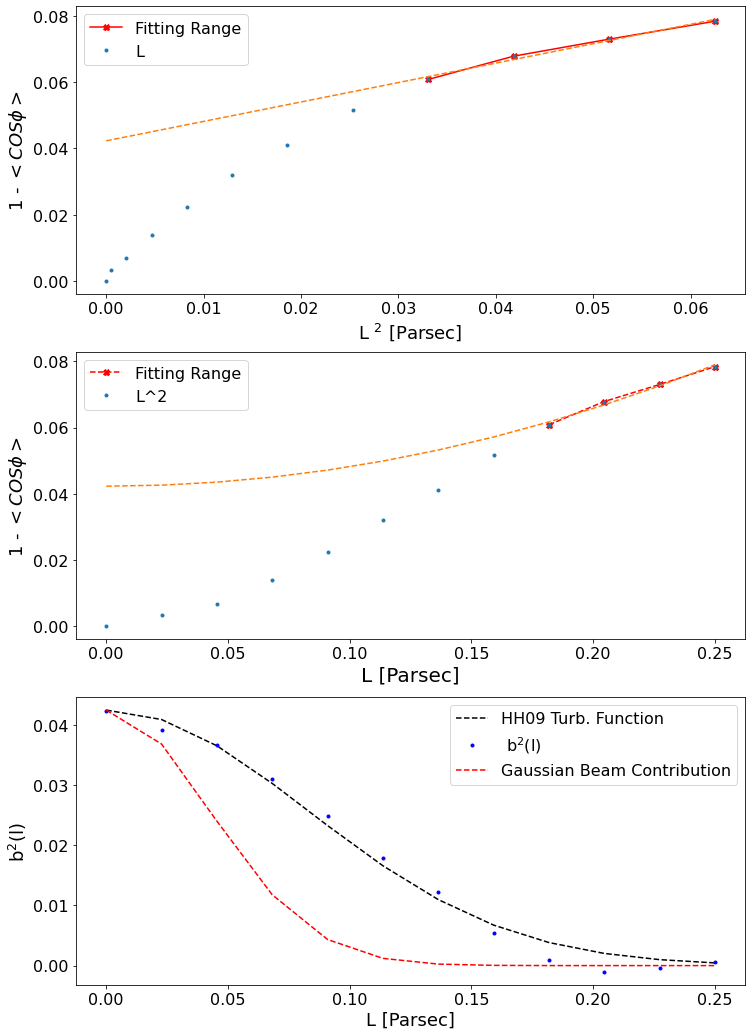The Davis Chandrasekhar Fermi method written in python
Project description
PyDCF (Modified Davis Chandrasekhar Fermi Method In Python)
Star formation is one of nature's many mysteries that has no clear explanation among astrophysicists and astronomers. Two fundamental forces of nature- Electromagnetism and Gravity, are believed to play a pivotal role during this process but appear to be in opposition to each other based on our current scientific theories.
The Davis Chandrasekhar Fermi method is an proposed theory that uses the polarization of light to calculate the large scale magnetic field strength of the interstellar medium. Through this method, we can analyze polarization maps in order to have a stronger understanding of the role that Magnetic fields play in the Star Formation Process. Many variations of the DCF method have been formulated over the past decades, one of which is the famous HH09 Analytical Dispersion method proposed by Martin Houde et al. (2009)- https://arxiv.org/pdf/0909.5227.pdf.
PyDCF serves as a Python implementation of the HH09 Analytical DCF method, a variation of the Classical DCF method which can correct for the overestimation effects not accounted in the classical DCF method which are typically induced by sources such as: beam smoothing, differential rotation, and bending of the magnetic field due to gravity.
A quick, in-depth guide is shown below. If anything is still confusing, please do not hestitate to reach out to me at jp7dec23@gmail.com.
Installation
PyDCF is available for installation through PyPI (Current version is 1.0.3).
pip3 install PyDCF==1.0.3
Tutorial
First, we need to load the data. Go to the main file, this block of code loads the polarization data, velocity dispersion and mean density maps.
Note- you need astropy or some version of fits opener installed.
data = fits.open("L1M10_0.1.fits")[0].data
velocity = fits.open("L1M10_sigmav_0.1.fits")[0].data
density = fits.open("L1M10_meanrho_0.1.fits")[0].data
Second, since our polarization map is too large for the HH09 method, so we need to snip it down and make it smaller. Let's look at a highly filamentary region.
y_cen = (280)
x_cen = (140)
rad = 60
# Taking a smaller region from the entire map.
data_pol_region = data_cut(x_cen, y_cen, rad, data, show=True)
data_v_region = data_cut(x_cen, y_cen, rad, velocity, show=False)
data_rho_region = data_cut(x_cen, y_cen, rad, density, show=False)
Third, load up the PyDCF package and initialize it with the data.
pold1 = PyDCF(polarization = data_pol_region,
velocity = data_v_region,
density = data_rho_region,
beam_resolution = 0.1,
pixel_scale = 10/512)
pold1.calculate_angular_dispersions()
Finally, call the fit function as shown
pold1.HH09_fit(fit0 = 18, fitf = 25, cloud_depth = 1.51)
pold1.HH09_parameters()
You should get a pretty plot that looks something like this!
Lastly, if we want to compare the Classical, MDCF and even the Skalidis method, we can call the follow methods: The correction factor method takes the true magnetic field strength of the simulation and returns the estimated value divided by the true value.
print(str(pold1.ClassicalDCF_calculation()*1e6) + " Microgauss")
print(str(pold1.SkalidisDCF_calculation()*1e6) + " Microgauss")
print(str(pold1.HH09DCF_calculation()*1e6) + " Microgauss")
pold1.correction_factors(10/1e6) # Convert this to Microgauss

Project details
Download files
Download the file for your platform. If you're not sure which to choose, learn more about installing packages.












